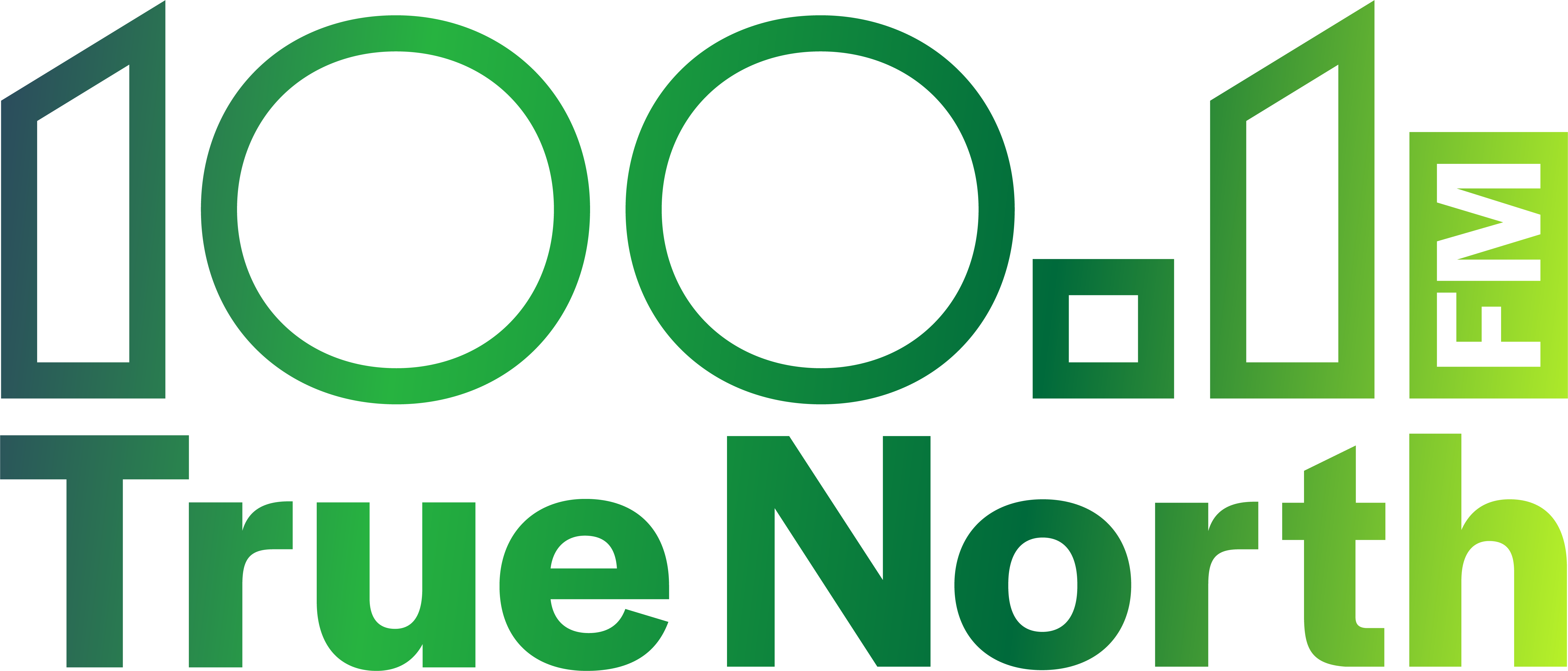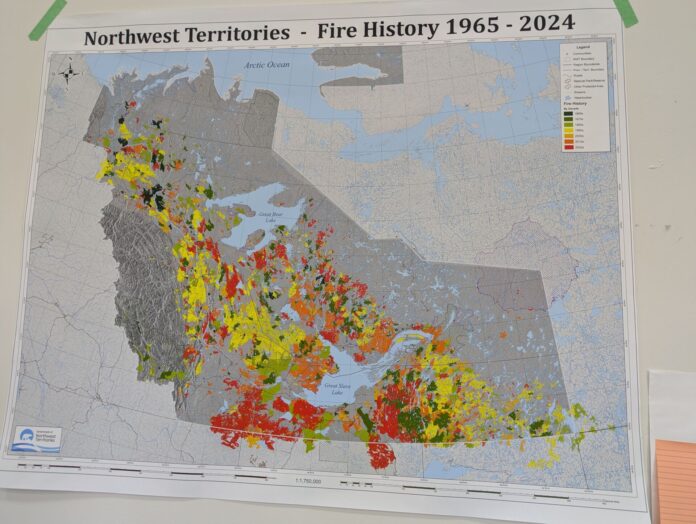Some wildfire experts warn that not using controlled burns prior to wildfire season could intensify the risk of forest fires.
On Thursday, a group of wildfire experts took part in a panel discussion about the use of controlled fire for hazard reduction.
“Global warming is a problem. The winds are stronger now. The land is drier. So we have to do things a little differently,” said Danny Beaulieu, who is the mayor of Fort Providence and a firefighter with over 40 years of experience.
The first week of May is the “fine window” of time when a prescribed burn normally should take place, Beaulieu said.
Over 100 people took part in the discussion, including representatives from 29 forested communities in NWT, including senior administrative officers, band managers, community fire chiefs and Indigenous governments.
The event took place at the NWT Wildfire Preparedness Workshop at the Chateau Nova Hotel in the city of Yellowknife.
The wildfire experts came together to share knowledge about the role of wildfire in the landscape, and how climate change is influencing wildfire.
They discussed wildfire preparedness strategies, mitigation practices, planning tools and resources as well as collaborative ways to grow community resilience.
Joe Gilchrist, who is a Secwepmc Fire Keeper, spoke about the Indigenous use of fire, the stewardship of the land, and traditional ways of using fire as a tool.
Gilchrist began fighting forest fires when he was 15 years old. In 1992 he took on the role of Unit Crew Leader and travelled across the west coast and the country battling forest fires.
He said that when Indigenous people were removed from their lands due to epidemics and residential schools, important cycles were broken.
Gilchrist said that climate change is making that worse. With the land of the territories being hot and dry in warm months, natural material on the ground is building up and becoming a source of “fuel.”
Beaulieu reflected on the ways that forest fires and people’s responses to them have changed dramatically over a few generations.
“Fire was always a part of my life,” said Beaulieu, who has worked for the GNWT’s Environment and Climate Change for over 40 years, including as a fire base manager.
“(Forest) firefighting did not start till after the Second World War, that’s 1945. And up here nobody fought fire until the 50s. Before that fire burned.”
Beaulieu told the group a story his mother had told him about how her community lived alongside wildfires. In those days, fire was a normal part of the warm seasons, fire had a role within natural seasons and cycles, he explained.
Back in 1943, when his mother was about 8 years old, a forest fire hit her town.
About 50 people lived in his mother’s village at that time. He remembered how his mother retold the story to him of how they protected the village from fire. His mother grabbed hot pails of water and started to douse the house with water. Members of her family and community did the same.
The village was wet with water and the fire went by. “And it just kept going down up the river, way back and entering the traplines,” said Beaulieu.
“And in the fall time, my grandfather hooked up the dogs and just disappeared in a burn and went trapping,” he added.
In the 1960s, the government began threatening to charge people in his community with arson for practising controlled burning.
He remembered that back in the 1960s the government threatened to charge him with arson because he tried to burn grass.
Beaulieu said that in 1980 he got a job at Fort Resolution as a base manager and his job was to put out fire. Some days he put out seven fires he said, creating a pattern similar to the map shown by scientists earlier that day in another workshop.
On maps, “well-pronounced patterns” of fires which had started in different regions across the country can be seen.
Beaulieu pointed out that the pattern does not exist north of Yellowknife on maps going up to the 1960s because they never fought fire north of Yellowknife.
“Everybody is talking about those maps,” said Beaulieu but he points out that if you took a map from the 1800s, it would likely look the same because no one was mapping fires back then.
Beaulieu said that the only thing that changed, a mistake made was “putting out too much fire.”
He emphasized that it’s important to protect homes and communities from fires, but it’s also important to consider prevention measures like controlled burns.
“We still have to protect homes. We have to protect cabins and communities. The last couple of years, we’ve been doing a really poor job of it,” he said.
Beaulieu lamented that Fort Providence lost almost all its cabins in 2023’s forest fires, And in Enterprise almost all homes burned down. In 2023 unprecedented wildfires devastated these communities.
“For 40 years they never let the fire burn,” he said.
Beaulieu explained he realized that global warming is a factor and stronger winds are a factor to consider.
“I know global warming is a problem. The winds are stronger now. The land is drier. So we have to do things a little differently,” he said.
The first week of May is the “fine window” of time when a prescribed burn normally should take place, Beaulieu said.
Beaulieu reported he had recently been informed there would be no crews or helicopters out during this wildfire season.
Rodney Schmidt, fire chief and director of emergency services for the Town of High Level, agreed that controlled burns can reduce hazards.
“First of all, one as a reduction piece, right? So if we remove some of those fuels and we burn off that dead grass and it turns into green grass so when the fire season does hit, or when forest fires do hit our community, we don’t have any wicks of that dry grass, feeding fires into town.
“That’s the number one reason that we do it,” he explained.
Schmidt said the other reason has to do with training for wildfires.
“There’s two facets to the training piece that we use it for. One, we always make as part of our Wildland curriculum. So we start our Wildland curricular review with our firefighters every April and we go through modules, our own modules, so our own training, with our crews,” he said.
Schmidt said they always involve Alberta Wildfire in planned burns.
He explained that controlled burns give crews a chance to get to know each other and learn how to work together. Schmidt said that in his experience, using planned fire is about “relationship building.”
Panel leaders and attendees talked into the afternoon and took part in a workshop together about the multi-faceted challenges posed by wildfires.





